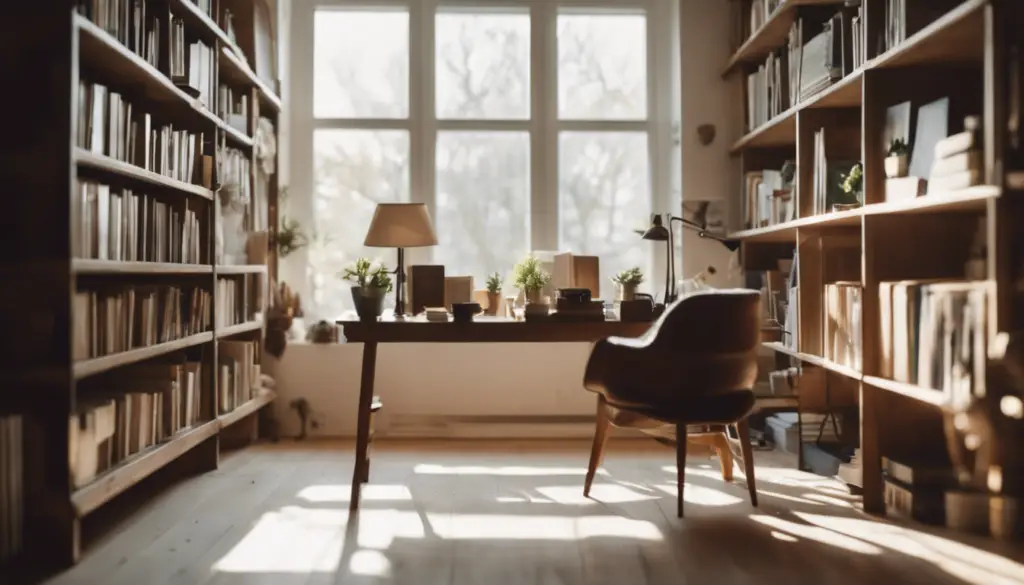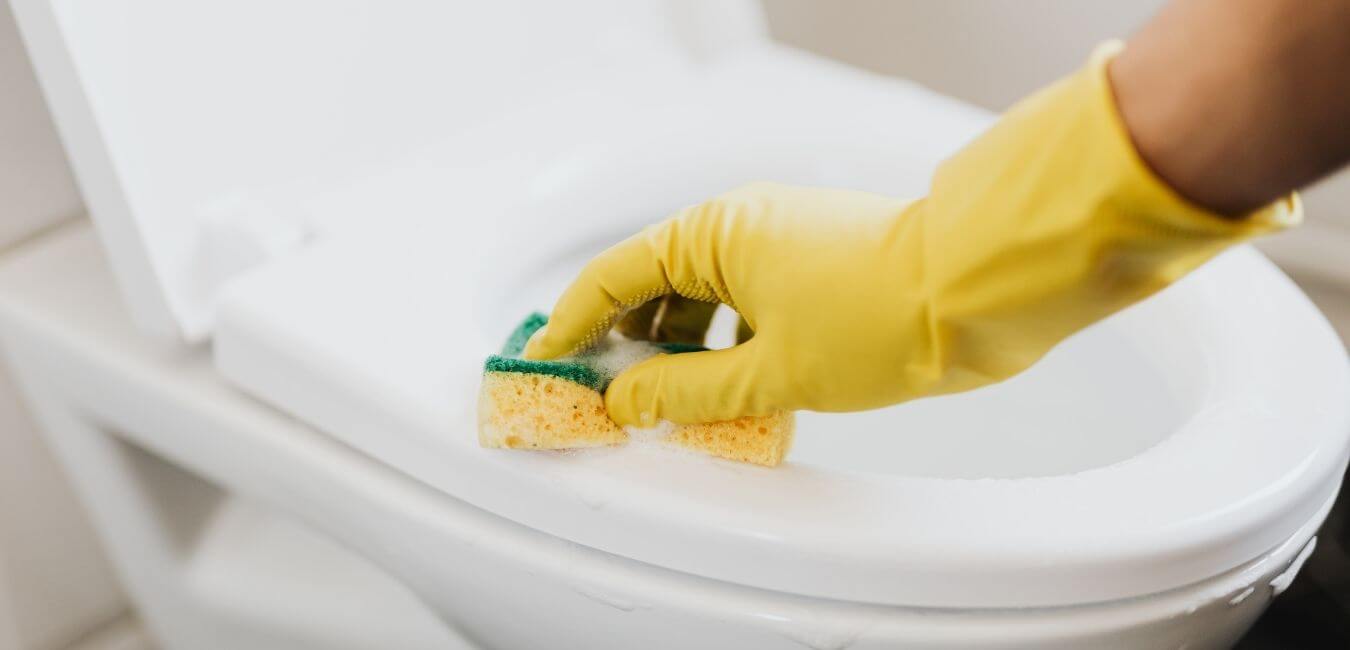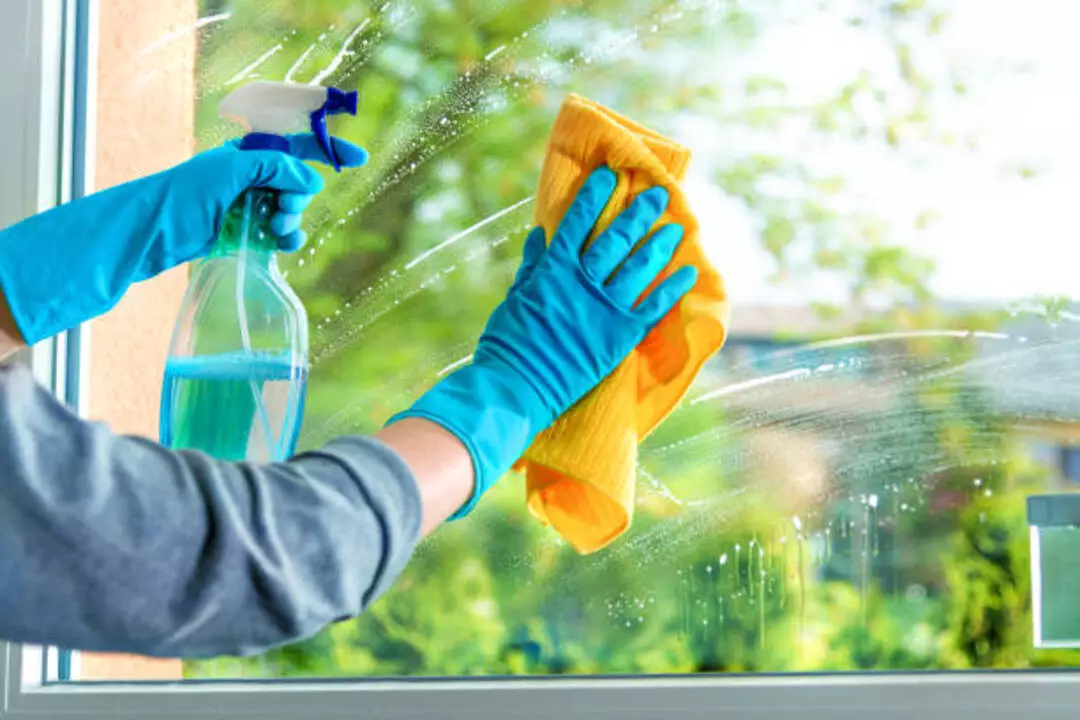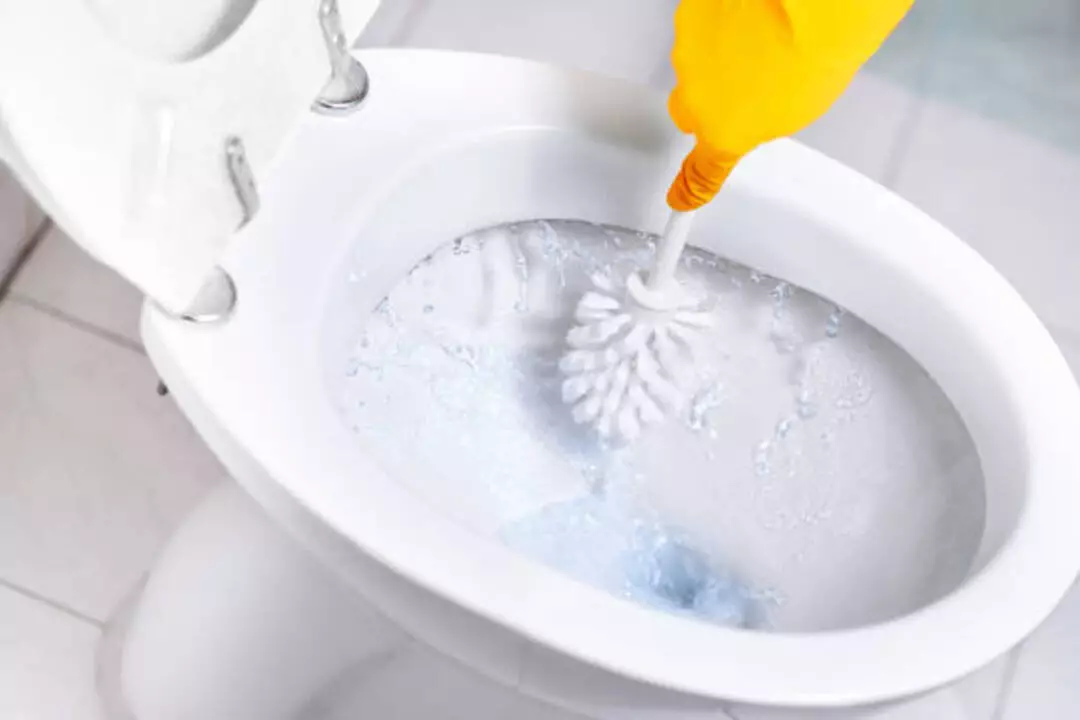In a world where material possessions seem to multiply overnight, it’s no wonder many of us find ourselves drowning in clutter.
From overflowing closets and jam-packed garages to cluttered countertops and chaotic living spaces, the accumulation of too much stuff can quickly become overwhelming. If you’re tired of constantly searching for lost items or feeling suffocated by the chaos surrounding you, fear not!
In this article, we will provide you with valuable tips and tricks on how to declutter your home and regain control over your space.
Whether you’re a self-proclaimed pack rat or simply struggling with an influx of possessions, these practical strategies will help you conquer the clutter once and for all.
The Impact of Clutter on mental health and Productivity
The impact of clutter on mental health and productivity cannot be underestimated. Research has shown that a cluttered environment can have negative effects on our well-being and ability to focus.
Clutter can increase stress levels, make it difficult to relax and rest, and create feelings of overwhelm and anxiety. It can also lead to procrastination, as we become easily distracted by the mess around us.
Moreover, clutter can strain relationships with those we live with and even trigger unhealthy behaviors, such as emotional eating.
On the other hand, clean and organized space can improve our mood, enhance productivity, and promote a sense of calm and clarity.
By decluttering our environment, we can create a more peaceful and efficient living and working space. It’s important to recognize the impact clutter can have on our mental health and take steps to minimize it. [1][2]
The benefits of decluttering
Decluttering has numerous benefits for both mental and physical well-being. When you declutter your living space, you create a more organized and orderly environment, which can have a positive impact on your mood and state of mind. Here are some key benefits of decluttering:
- Reduces stress: Clutter can be overwhelming and create a sense of chaos. By decluttering, you create a calm and peaceful environment that can help reduce stress and anxiety.
- Improves focus and productivity: When your living space is clutter-free, it becomes easier to concentrate on tasks and stay organized. This can enhance your productivity and efficiency.
- Boosts mood and positivity: A tidy home can create a sense of accomplishment and pride. It can also improve your overall mood and make you feel more relaxed and content.
- Enhances physical health: Clutter can collect dust, mold, and allergens, which can trigger respiratory issues and allergies. Decluttering can help reduce these health risks and create a healthier living space.
- Promotes better relationships: Clutter can cause tension and conflict with family members or roommates. By decluttering, you create a harmonious environment that can improve relationships and make it more enjoyable to spend time together.
Remember, decluttering doesn’t have to be overwhelming. Start small, focus on one area at a time, and be intentional about what items you keep. By taking the time to declutter, you can transform your living space into a balanced and peaceful retreat. [3][4]
Assessing the Clutter

Identifying problem areas in your home
Identifying problem areas in your home is an essential first step in the decluttering process. Start by taking a walk through your living spaces and noting areas that seem disorganized or overwhelmed with items.
This could include your closets, kitchen cabinets, garage, or even your digital files. Here are some tips for identifying problem areas:
- Look for spaces that consistently attract clutter, such as the entryway or dining table.
- Pay attention to areas that are difficult to clean or access, as this often leads to accumulation.
- Take note of rooms or storage areas that are overcrowded and lack proper organization systems.
- Consider areas where you frequently struggle to find what you’re looking for or have trouble keeping tidy.
By identifying these problem areas, you can prioritize your decluttering efforts and develop a plan to tackle each space effectively. Remember, decluttering is a step-by-step process, and taking the time to identify the problem areas will set you up for success in creating a more organized and peaceful living environment.
For more tips and tricks on decluttering and home organization, check out this Home Organization Guide from Extra Space Storage. [5][6]
Understanding why you hold on to certain items
Understanding why we hold on to certain items is crucial when it comes to decluttering. These are some common reasons why we often struggle to let go:
- Emotional attachment: We may have sentimental value or memories associated with certain items, making it difficult to part with them.
- Guilt: Holding onto items because we feel guilty about getting rid of something we spent a lot of money on or because it was a gift.
- Fear of scarcity: The belief that we may need the item in the future or that it might come in handy someday, leading to a fear of not having enough.
- Pressure from others: Feeling obligated to keep items due to expectations from family, friends, or society.
To overcome these challenges, it’s important to:
- Recognize that more stuff does not equal more happiness.
- Embrace a mindset of minimalism and evaluate whether an item truly adds value to your life.
- Focus on the present moment and the future, rather than holding onto the past.
- Practice gratitude for the memories associated with items, regardless of whether you keep them or not.
By understanding why we have difficulty letting go, we can approach decluttering with compassion and make choices that align with our desire for a balanced and peaceful living space. [7][8]
Decluttering Techniques
The Four-Box Technique: Keep, Donate, Trash, Maybe
The Four-Box Technique is a simple and effective method to declutter your home. It involves gathering four boxes, each labeled with a specific category: Keep, Donate, Trash, and Maybe. Here’s how it works:
- Keep: This box is for items that you use on a daily or weekly basis and should be put away in their proper spot. It includes things that are essential and regularly used.
- Donate: Items that are in good condition but no longer needed or wanted can be placed in this box. Consider donating them to organizations or individuals who can benefit from them.
- Trash: This box is for items that are in poor condition or no longer useful. Broken or heavily damaged objects that cannot be repaired or repurposed should be discarded or recycled.
- Maybe: This box is for items that you are unsure about and need more time to decide whether to keep or let go. Store these items temporarily and revisit them after a few months. It’s important to consider their use, sentimental value, and whether they contribute positively to your life.
By dividing your belongings into these four categories, the Four-Box Technique helps you make conscious decisions about what to keep and what to let go. It reduces overwhelm and anxiety associated with decluttering and ensures that items are properly sorted for donation, disposal, or storage. [9][10]
The KonMari Method: Sparking joy in your belongings
The KonMari Method, developed by professional organizer Marie Kondo, is a popular approach to decluttering and organizing that focuses on sparking joy in your belongings. The philosophy behind the KonMari Method is to surround yourself only with items that truly bring you happiness and let go of the rest.
Here are some key principles of the KonMari Method:
- Tidy by category, not by location: Instead of tackling one room at a time, the KonMari Method suggests tidying up based on categories such as clothing, books, papers, komono (miscellaneous items), and sentimental items.
- Choose what sparks joy: When going through your belongings, hold each item and ask yourself if it sparks joy in your heart. If it doesn’t, it’s time to let go of it.
- Thank items before letting them go: Express gratitude to the items you decide to discard for the role they played in your life. This practice helps you develop a sense of closure and appreciation.
- Visualize your ideal lifestyle: Before you begin the tidying process, imagine the kind of home and lifestyle you want to have. This visualization will guide your decision-making process.
The KonMari Method has gained popularity due to its focus on mindfulness and intentionality in the decluttering process. By only keeping items that bring us joy, we can create a more balanced and peaceful living space.
To learn more about the KonMari Method, you can visit Marie Kondo’s official website here. [11][12]
Room-by-room decluttering strategies
When it comes to decluttering, taking a room-by-room approach can be incredibly helpful in keeping you organized and focused on specific areas of your home. Here are some room-by-room decluttering strategies to help you tackle the clutter:
- Living Room: Start by sorting through books, magazines, and entertainment media. Donate or sell items you no longer use or need. Clear out any unnecessary furniture or decor items that create a sense of clutter.
- Kitchen: Begin by organizing your pantry and getting rid of expired food items. Clear off countertops and keep only essential appliances and utensils. Donate duplicate or unused kitchen gadgets.
- Bedroom: Donate or sell clothing items that no longer fit or that you haven’t worn in a while. Clear out your nightstand and dresser drawers, keeping only items you regularly use. Organize your closet and consider implementing storage solutions to maximize space.
- Bathroom: Toss expired medications, beauty products, and old towels. Organize your toiletries and utilize bins or baskets to keep items neatly stored. Streamline your cleaning supplies, keeping only what you need.
- Home Office: Clear off your desk and organize paperwork and office supplies. Digitize important documents to reduce paper clutter. Set up a filing system to keep documents organized and easily accessible.
Remember, decluttering is an ongoing process. Regularly assess your belongings and let go of items that no longer serve a purpose or bring you joy. By following these room-by-room strategies, you can create a more organized and peaceful living space. [13][14]
Efficient Organization Systems
Utilizing storage solutions to maximize space
When decluttering and organizing your home, utilizing storage solutions can help maximize space and keep your belongings organized. Here are some tips and ideas to make the most of your storage space:
- Utilize vertical space: Install shelves or utilize stacking bins to maximize vertical space in closets, garages, or storage rooms. This allows you to store more items without taking up extra floor space.
- Use storage containers: Invest in storage containers that can stack or fit under beds, such as clear plastic bins or vacuum-sealed bags. These containers keep items organized and protect them from dust or damage.
- Install shelving units or racks: Adding shelves or racks to closets or pantries can provide additional storage space for items like shoes, linens, or pantry items.
- Use hanging organizers: Hang organizers on the back of doors or in closets to store shoes, accessories, cleaning supplies, or other small items.
- Utilize underutilized spaces: Make use of space under stairs, in nooks, or corners by adding shelves, cabinets, or hooks for extra storage.
- Invest in furniture with built-in storage: Furniture pieces like ottomans, beds with drawers, or coffee tables with storage compartments can help maximize limited space.
- Utilize wall space: Install hooks or racks on walls to hang items such as coats, bags, or kitchen utensils.
- Label and categorize: Clearly label containers or shelves to easily locate items when needed.
By utilizing these storage solutions, you can make the most of your space and keep your home organized and clutter-free. For more ideas and inspiration, you can explore additional storage tips and solutions from Extra Space Storage. [15][16]
Tips for maintaining an organized home
Maintaining an organized home is key to preventing clutter from accumulating. Here are some tips to help you keep your space tidy:
- Create a routine: Set aside specific times each day or week to declutter and organize different areas of your home. This will help prevent clutter from piling up and make it easier to maintain an organized space.
- Assign a home for everything: Designate a specific place for each item in your home. This will make it easier to find things when you need them and prevent clutter from accumulating.
- Regularly declutter: Take a few minutes each day to declutter small areas in your home. This could include clearing off countertops, tidying up your desk, or organizing your closet. By consistently decluttering, you can prevent clutter from getting out of hand.
- Practice the “one in, one out” rule: For every new item you bring into your home, try to remove an old or unused item. This will help prevent your space from becoming overcrowded with unnecessary things.
- Use storage solutions: Invest in storage solutions such as bins, baskets, and shelves to help keep your belongings organized and easily accessible.
By following these tips and making decluttering a regular part of your routine, you can maintain an organized and clutter-free home. [17][18]
Emotional Considerations
Managing sentimental items
Managing sentimental items can be a challenging task when decluttering. These items hold emotional value, and it can be difficult to let go of things that hold special memories. However, it’s important to find a balance between keeping meaningful items and decluttering the excess. Here are some tips to help manage sentimental items effectively:
- Focus on the memories: Remember that memories reside in your mind and heart, not in the physical items themselves. While sentimental items may trigger memories, it’s essential to prioritize the emotional connection rather than the object.
- Set boundaries: Determine how much space you can allocate to sentimental items. Set limits or designate a specific container or area to contain these items. This will help prevent clutter from accumulating and ensure that you keep only the most meaningful items.
- Take photos: Consider taking photographs of sentimental items before letting them go. This allows you to preserve the memory without the physical clutter.
- Share the joy: If you have sentimental items that hold meaning for others, consider gifting or passing them on to family members or friends who will appreciate them. This way, the item can continue to bring joy and hold significance for someone else.
- Keep a few cherished items: Instead of holding onto every sentimental item, select a few that truly hold deep meaning and let go of the rest. By curating your collection, you can focus on the items that bring you the most joy.
Remember, managing sentimental items is a personal process, and it’s essential to find what works best for you. [19][20]
Dealing with guilt and attachment to belongings
When decluttering, dealing with feelings of guilt and attachment to belongings can be challenging. It’s common to hold onto items due to sentimental value or feelings of obligation. Here are some strategies to help navigate through these emotions:
- Recognize the emotions: Acknowledge that it’s normal to feel attached to certain items but understand that memories can be kept without physical possessions.
- Practice gratitude: Focus on the positive experiences associated with the item and express gratitude for the memories it represents.
- Let go of guilt: Remember that keeping an item out of guilt is not a healthy reason to hold onto it. Release the guilt and allow yourself to prioritize your own well-being and space.
- Take photos: Document sentimental items through photographs to preserve the memories while freeing up physical space.
- Repurpose or gift: If an item holds sentimental value but no longer serves a purpose, consider repurposing it or giving it to someone who would appreciate it.
- Seek support: Talk to a friend or family member about your attachment to certain belongings. Getting an outside perspective can help provide clarity.
- Set boundaries: Establish limits on the number of sentimental items you’re willing to keep. This can help manage clutter and prevent it from becoming overwhelming.
Remember, decluttering is a personal journey, and it’s important to prioritize what brings you joy and peace in your living space.
Selling and Donating
Options for selling unwanted items
When decluttering, you may come across unwanted items that still have value. Here are some options for selling those items and making some extra money:
- eBay: This popular online marketplace allows you to sell a wide range of items, from electronics to clothing. Take high-quality photos, write accurate descriptions, and set your own prices.
- Facebook Marketplace: This platform allows you to sell items within your local community. It’s easy to post and share items, and negotiation is possible.
- Poshmark: If you have clothing, shoes, or accessories in good condition, Poshmark is a great option. Take attractive photos, list your items, and handle payments through the app.
- Decluttr: If you have electronics, DVDs, or CDs to sell, Decluttr offers a convenient solution. Simply scan or enter the barcode of your items, and they will provide you with an instant offer. They even provide a prepaid shipping label.
- Consignment Shops: Consignment shops allow you to bring your items to their store, and they will sell them on your behalf. You receive a percentage of the sale price. Research local consignment shops or consider nationwide brands like Plato’s Closet or Once Upon a Child for specific items.
- Yard Sales: Organizing a yard sale is a classic way to sell unwanted items. Set up a designated area, price your items, and advertise the sale in your local community.
Remember, when selling your items, it’s important to clean them and present them nicely to attract buyers. Additionally, be realistic with your prices and be open to negotiation.
Choosing the right organizations to donate to
When decluttering and deciding to donate items, it’s important to choose the right organizations to ensure that your donations are being put to good use. Here are some factors to consider when selecting the right organizations to donate to:
- Local Charities: Consider donating to local charities in your community. These organizations often have a direct impact on the local community and can make a difference in the lives of those in need.
- Thrift Stores: Donating to thrift stores such as Goodwill or the Salvation Army is a popular option. These organizations sell donated items at affordable prices and use the proceeds to fund various programs and services.
- Nonprofit Organizations: Look for nonprofit organizations that align with causes you care about. For example, there are organizations that accept donations specifically for children, women’s shelters, veterans, or animal welfare.
- Online Platforms: Consider using online platforms such as Freecycle or Craigslist to give away items directly to individuals who may need them. This can be a convenient option for donating specific items that may not be accepted by traditional organizations.
- Environmental Organizations: If you have items that can be recycled or reused, consider donating them to environmental organizations. These organizations often accept items such as electronics, clothing, and household goods to prevent them from ending up in landfills.
Remember to check the donation guidelines of each organization to ensure that your items are accepted and will be put to good use.
Simplifying Shopping Habits
Preventing future clutter accumulation
Preventing future clutter accumulation is essential for maintaining an organized and clutter-free home. Here are some effective strategies:
- Practice the “one in, one out” rule: For every new item you bring into your home, make an effort to remove a similar item. This helps to prevent unnecessary accumulation.
- Adopt a minimalist mindset: Embrace the idea of only owning what you truly need and love. Let go of items that no longer serve a purpose or bring you joy.
- Establish routines: Set aside dedicated time each day or week to declutter and organize. Incorporate small habits, like tidying up before bed or sorting through mail immediately, to prevent clutter from piling up.
- Utilize storage solutions: Use labeled bins, baskets, and organizers to keep your belongings organized and easily accessible. Maximize storage space by utilizing underutilized areas, such as the back of doors or vertical wall space.
By implementing these strategies and being mindful of your belongings, you can prevent future clutter accumulation and maintain an organized and peaceful living space.
Creating a Minimalist Mindset
Creating a minimalist mindset is all about shifting our mindset and adopting a more intentional and purposeful approach to our belongings and lifestyle. Here are some key steps to help cultivate a minimalist mindset:
- Evaluate your values and priorities: Reflect on what truly matters to you and what brings you joy and fulfillment in life. Focus on aligning your actions and possessions with these values.
- Practice gratitude: Appreciate the things you already have and resist the urge to constantly acquire more. Cultivating gratitude can help shift your mindset from always wanting more to being content with what you have.
- Declutter regularly: Regularly assess your belongings and let go of items that no longer serve a purpose or bring you happiness. This will help create more physical and mental space in your life.
- Embrace simplicity: Simplify your life by eliminating unnecessary distractions and commitments. Streamline your daily routines and focus on what truly matters to you.
- Mindful consumption: Before making a purchase, consider if the item aligns with your values, if you truly need it, and if it will add value to your life. Avoid impulsive buying and focus on buying only what you truly need.
By adopting these practices, you can cultivate a minimalist mindset and create a more intentional, fulfilling, and clutter-free life.
Maintaining a Clutter-Free Home
Daily habits to stay organized
Staying organized requires implementing daily habits and routines that help maintain a clutter-free environment. Here are some helpful tips to stay organized on a daily basis:
- Make your bed every morning to start the day off with a clean and organized space.
- Put things back in their designated place as soon as you’re finished using them.
- Clear off flat surfaces, such as countertops and tables, at least once a day.
- Put away coats, bags, and shoes immediately when you come home.
- Do the dishes right after meals to prevent clutter from piling up in the kitchen.
- Sort through the mail and paperwork regularly to avoid unnecessary clutter.
- Empty the recycling and trash bins regularly to keep your space clean.
- Develop a weekly cleaning routine to maintain a tidy home.
- Use storage solutions, such as bins and baskets, to keep items organized and easily accessible.
- Encourage the whole family to adopt these habits and create a sense of shared responsibility.
By incorporating these daily habits into your routine, you’ll be able to maintain an organized and clutter-free home.
Regular decluttering routines
Regular decluttering routines are essential for maintaining an organized and clutter-free home. Here are some tips to help you establish and stick to a decluttering routine:
- Schedule decluttering sessions: Set aside specific days or times each week or month dedicated to decluttering. This will help you stay on track and prevent clutter from accumulating.
- Start small: Break down your decluttering tasks into smaller, more manageable chunks. Focus on one area or room at a time to avoid feeling overwhelmed.
- Use the four-box technique: Keep, Donate, Trash, and Maybe. As you declutter, categorize items into these boxes based on whether you want to keep them, donate them, throw them away, or are unsure and need more time to decide.
- Regularly reevaluate your belongings: As you go about your daily life, take note of any items that are no longer useful or bring you joy. Regularly declutter and let go of these items to maintain a clutter-free space.
- Develop good organizing habits: Make it a habit to put things back in their designated places after use. Encourage the whole family to participate in maintaining an organized and clutter-free home.
Establishing a regular decluttering routine will not only help you maintain an organized space but also contribute to a more peaceful and balanced living environment.
Final thoughts
The transformative effects of decluttering
The transformative effects of decluttering are profound and far-reaching. When we declutter our physical space, we also declutter our mental and emotional space. Here are some of the transformative effects of decluttering:
- Increased focus and productivity: Clutter can be a major distraction, making it difficult to concentrate and stay focused on tasks. By decluttering our space, we create a clean and organized environment that promotes better focus and productivity.
- Reduced stress and anxiety: Clutter has been shown to contribute to feelings of stress and anxiety. When we declutter, we create a sense of calm and order, reducing the mental burden that comes with a cluttered space.
- Improved mental clarity: A cluttered space can lead to a cluttered mind. Decluttering allows us to clear our minds, making it easier to think clearly and make better decisions.
- Enhanced creativity and inspiration: A clean and organized space has been found to stimulate creativity and inspire new ideas. Removing clutter allows for a fresh perspective and a renewed sense of creativity.
- Increased feelings of satisfaction and accomplishment: Decluttering can be a challenging task, but the sense of satisfaction and accomplishment that comes with a clean and organized space is worth it. It gives us a sense of control and achievement.
Decluttering has the power to transform not just our physical space, but also our mental and emotional well-being. It is a powerful tool for creating a balanced and peaceful living environment. [35][36]
Achieving a balanced and peaceful living space
Achieving a balanced and peaceful living space is essential for creating a calming environment that promotes relaxation and productivity. Here are some practical tips to help you achieve this:
- Declutter regularly: Remove unnecessary items from your home to create a clean and organized space.
- Create storage solutions: Utilize storage bins, shelves, and organizers to maximize space and keep items neatly organized.
- Incorporate natural elements: Bring nature indoors with plants, flowers, and natural materials like wood or stone to create a soothing atmosphere.
- Use calming colors: Choose soft, neutral colors for walls and décor to create a sense of calm and tranquility.
- Establish a cleaning routine: Regularly clean and tidy your living space to maintain a clutter-free environment.
- Create designated spaces: Establish specific areas for different activities to maintain a sense of order and purpose in your home.
- Practice minimalism: Embrace the concept of “less is more” and prioritize quality over quantity in your belongings.
By implementing these strategies, you can create a balanced and peaceful living space that promotes relaxation, productivity, and overall well-being.













